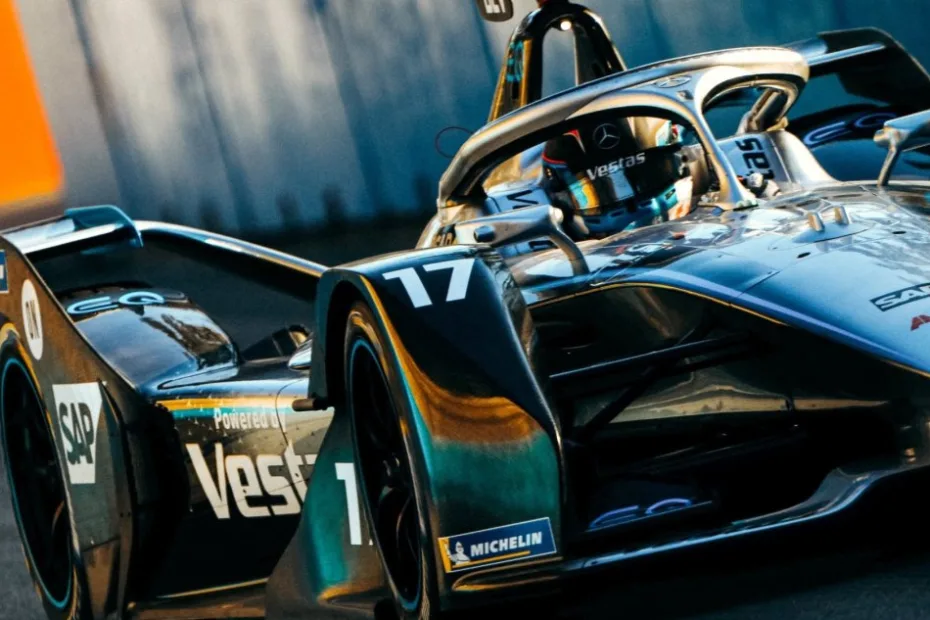Formula E can sometimes feel like a bewildering world to the new or the uninitiated. With futuristic powertrains and an unconventional format, it’s no wonder that some motorsport fans take a while to warm to it. But those who do persist are rewarded with a fantastic, high-octane championship filled with action.
Below is a guide to the rules of Formula E, to help you enjoy one of motorsports’ most entertaining new series.
Championship and Standings
The ABB FIA Formula E World Championship consists of two separate titles – one dedicated to the drivers and another dedicated to the teams. Simply put, the driver who has accumulated the most points throughout a season is crowned champion – while the team’s championship factors in the scores of both drivers.
Points system
Formula E follows the FIA’s standardized points system – one that will look very familiar to F1 fans. 25 points to the first place to 1 Point to the 10th place.
Points are awarded to the top 10 drivers from the race, the driver who secures the Julius Baer Pole Position, and whoever gets the faster lap of the race (though they must finish within the top 10). In 2019, a new rule was also introduced that awards the fastest drier from the group qualifying with a bonus point.
Julius Baer pole position – 3 points, the Fastest driver in Qualifying – 1 point, and the Fastest lap in the race – 1 point.

© Jaguar Racing
Race day format
The day before the main event, a shakedown will often take place, although this can depend upon the circuit’s availability. Drivers can use this session to check their electronic systems as well as the reliability of the car. Simultaneously, the FIA will use this time to check the track layout, taking into account any feedback from the driver’s briefing.
Practice
Each event has two practice sessions, the first of which being 45 minutes in length, swiftly followed by another that is 30 minutes long. However, this is reduced to one 45-minute session on the second day of a double-header. Practice is the first chance drivers get to test themselves under timed conditions, getting a general feel for the track.
It also presents them with a great opportunity to adapt the car set-up and to get it exactly where they want it before the crucial qualifying sessions. As the name indicates, practice is mere practice, and the result doesn’t contribute to the final result.
Qualifying and Super-Pole shoot-out
Just as it does in Formula 1, qualifying determines the order in which drivers will start the race in, with the fastest driver lining up in first place and the slowest at the back. Its duration is one hour, and sees drivers divided into four groups of up to six cars, the allotment of which is determined by championship position.
Once it gets underway, each driver has six minutes to set their best time, with the top six drivers proceeding to the Super-Pole shootout. Drivers go out one by one during the shootout, with the slowest driver from each being eliminated first.
E-Prix
Races begin with a standing start from assigned grid positions with drivers only allowed to start racing once the lights go green. The race lasts for a total of 45 minutes, although once the 45 minutes are up, there is still one lap to go as soon as the leader crosses the start/finish line.
One novelty feature of the race – introduced in 2018 – is ATTACKMODE, which lets every driver pick up an extra hit of power at their own risk. In order to activate the mode, drivers need to arm their car, veering off the racing line, through the activation Zone. The reward for taking the slower line through the corner is an extra 35 kW of power. Drivers will then posses that added speed for a few extra laps.
Another unique feature of an E-Prix is FANBOOST. As its name describes, the five drivers who receive it, via a fan vote, are awarded a significant boost burst of power which they can deploy in a five-second window during the second half of the race. Votes can be cast via the Formula E website or by using the #hashtag of their chosen driver on Twitter.
In contrast to many other premier series, FE also has several double-header races. Wherever possible, events stretch to two days with double the amount of action. The schedules are mirrored from each day.

Tyres and allocation
Formula E cars use bespoke 18-inch treaded all-weather tires – supplied by Michelin earliar and by Hankook since 2023. Drivers can’t use more than four new rear and four new front tires for each event.
Charging times
Charging the car is strictly forbidden during both qualifying and the race, as well as throughout parc ferme and scrutineering. Teams can change the cars in between sessions and during the practice.
e-Licence
Just as you or I need a license to legally drive on the road, so do Formula E drivers if they wish to compete in this illustrious series. To enter the FIA Formula E Championship, drivers must first participate in an FIA run training session which focuses on:
- Electrical safety
- Features of the fully electric Formula E car
- Reviewing both technical and sporting aspects of the series
In addition, drivers must have accumulated at least 20 points in the past three years, in conjunction with the FIA points system – the metric used to determine who can receive a Super Licence. This rule does not apply to the champion from the previous season, however, as he automatically qualifies for a Super Licence the following year.
